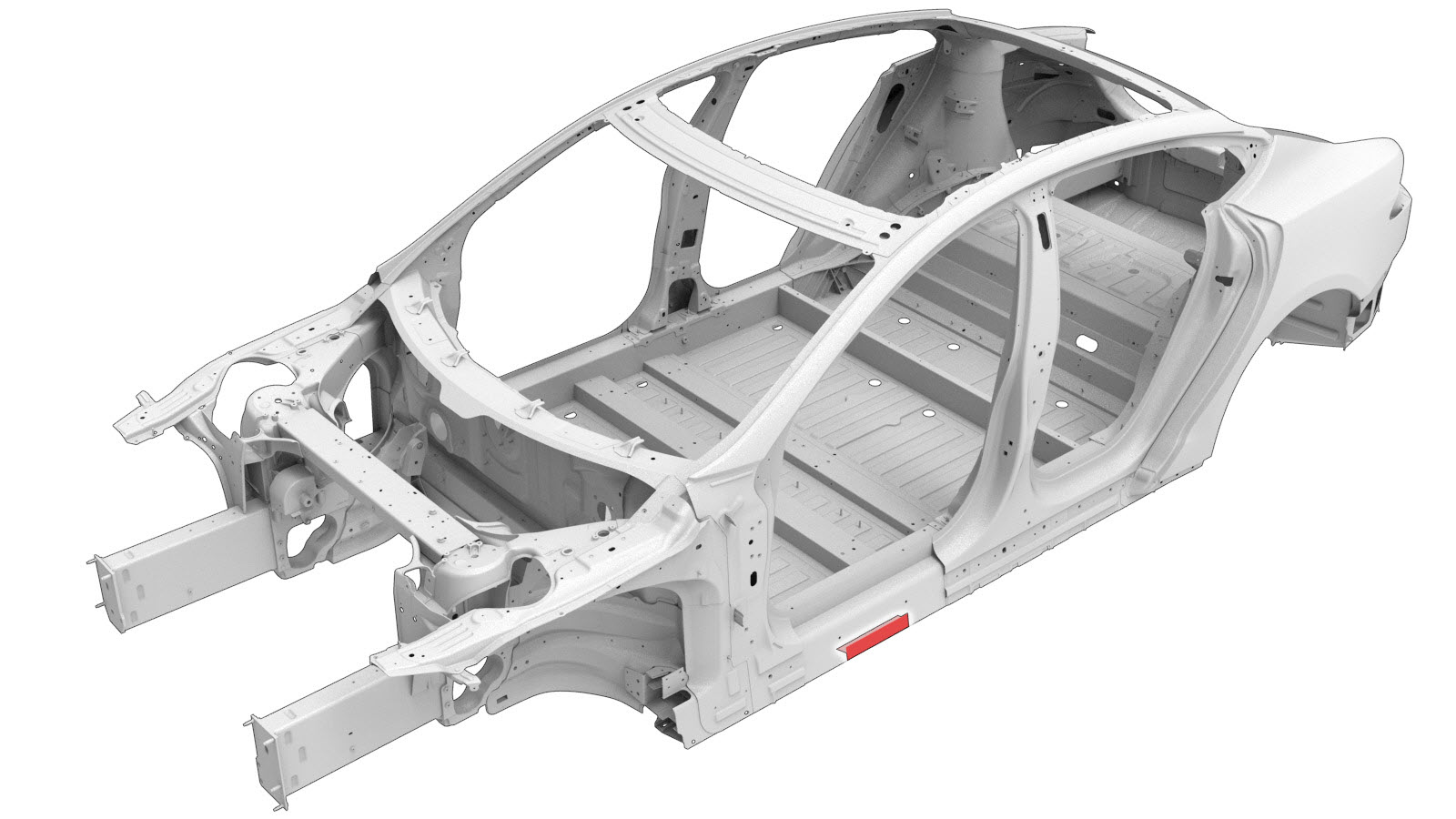Sill (Flange Area)
 Correction code:
10102901402
10102901702
NOTE:
Unless explicitly stated in the procedure, the above
correction code includes all Collision Repair work required
to perform this procedure, including the linked Collision
Repair procedures. Do not stack Collision Repair
correction codes unless explicitly told to do
so. Add any associated mechanical procedures
needed to perform this procedure.
Correction code:
10102901402
10102901702
NOTE:
Unless explicitly stated in the procedure, the above
correction code includes all Collision Repair work required
to perform this procedure, including the linked Collision
Repair procedures. Do not stack Collision Repair
correction codes unless explicitly told to do
so. Add any associated mechanical procedures
needed to perform this procedure.
Repair Information
- This repair procedure is used to repair damage to any portion of the Sill Flange area up to 250 mm. in length, where the damaged must be cut out and replaced. If the damaged area is longer than 250 mm, this procedure cannot be used. If the damaged area is longer than 250 mm, contact Tesla Collision Repair (refer to Sill Repair Guidelines for more information).
- Review all collision repair general practices and safety documentation and wear the appropriate PPE (Personal Protective Equipment) before beginning this procedure.
- This procedure can be completed without using a frame bench.
Parts List
| Quantity | Description | Image / Notes |
|---|---|---|
| 1 | LOWER CELL REPAIR SECTION (Lower Cell Repair Section) | |
| 1 | LOWER CELL BACKING PLATE (Lower Cell Backing Plate) | |
| 55 | Structural Countersunk Rivet, 6.5 mm |
Note The number
of rivets used in this repair varies depends on the size of
the section being repaired. |
| 2 | Rivnut, M8 - 1.25x3 |
Note Only if the
repair is in the area of the jack pad mounts. Tesla part number 1014282-00-A. |
When ordering parts, refer to the Parts Catalog and enter the VIN of the vehicle being repaired to find the correct parts (and the part numbers) for the vehicle. Alternatively, use the search function in the Parts Catalog to find a specific part for the vehicle.
Repair Procedure
-
Remove the necessary portion
of the Body Side Outer to expose
the underlying component being replaced.
- If necessary, remove other body panels for access.
-
Remove the damaged area of
the original component.
NoteDepending on the location of the repair area, the Rivnuts for the jack pads of the Sill may have to be removed in order to complete the repair.
Cut Line
Reference Line/Point
- A = Up to 250 mm.
- B = 47 mm.
-
Cut the new Lower Cell
Repair section to the length necessary for the repair to make the new
component.
NoteTrim the new Lower Cell Repair section as necessary to fit the repair area.
-
Cut the new Lower Cell
Backing Plate service part 80 mm. longer than the replacement section to
make the backing plate.
NoteUse the trimmed Lower Cell Repair section as template for measurement.
- C = 80 mm.
Cut Line
Reference Line/Point
-
Prepare for installation.
NoteDepending on the location of the repair area, the Rivnuts for the jack pads of the Sill may have to be removed in order to install Lower Cell Backing Plate.NoteDrill out any preexisting holes obstructed by the backing plate.or Structural Countersunk Rivets, 6.5 mmNoteSpace fasteners approximately 35 mm. apart in the repair area.
GMA Weld
- Apply structural adhesive to the mating surfaces on the vehicle and the new component or components.
-
Install the backing plate.
NoteDrill out any preexisting holes obstructed by the backing plate.NoteInstall the backing plate from either end of the Side Sill.
- Install the new component or components.
-
Perform GMA welding.
GMA WeldWarningFailure to follow all welding safety precautions, including the use of personal protective equipment, could result in serious injury or property damage. Only technicians who have completed Tesla’s approved welding training are authorized to weld structural components on Tesla vehicles.WarningTo maintain vehicle crash integrity, use only approved welding wire and an approved GMA welder to perform GMA welding on Tesla vehicles. Refer to Approved Gas Metal Arc (GMA) Welders and Welding Wire for information on approved GMA welders and welding wire.CAUTIONDo not weld on a Tesla vehicle before performing the Vehicle Electrical Isolation Procedure (refer to the vehicle-specific Service Manual for more information on the Vehicle Electrical Isolation Procedure). Welding on a Tesla vehicle with an energized high or low voltage system might damage vehicle components.NoteBefore GMA welding, a test weld using material of the same gauge and type should be performed to make sure that the welding equipment settings produce a satisfactory joint.
- Grind the GMA welds down until they are flush with the exterior of the surrounding panels.
-
Install the portion of the
Body Side Outer that was
removed to expose the component being replaced.
- Perform any necessary post-repair operations.